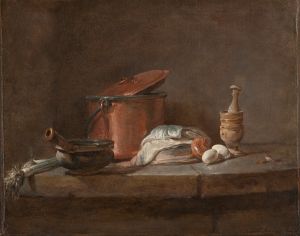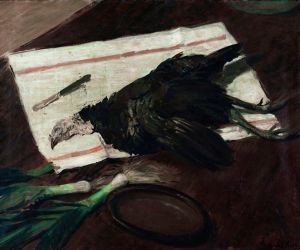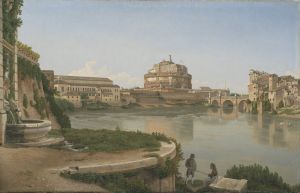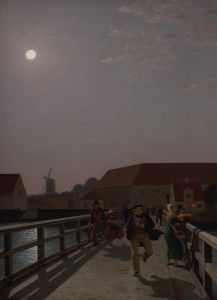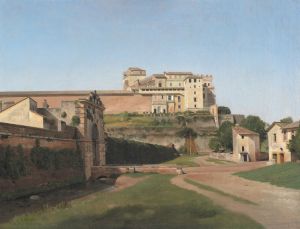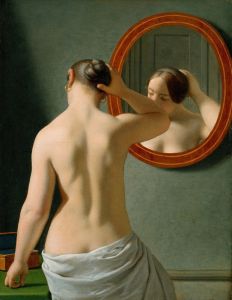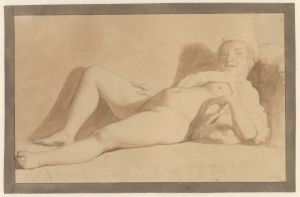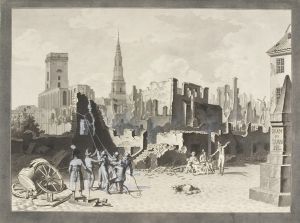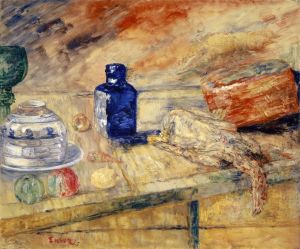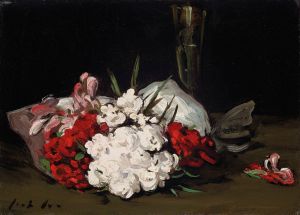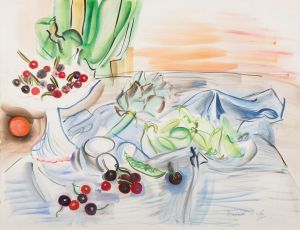
Maden Tilberedes – Eckersbergs værtinde i Paris
A hand-painted replica of Christoffer Wilhelm Eckersberg’s masterpiece Maden Tilberedes – Eckersbergs værtinde i Paris, meticulously crafted by professional artists to capture the true essence of the original. Each piece is created with museum-quality canvas and rare mineral pigments, carefully painted by experienced artists with delicate brushstrokes and rich, layered colors to perfectly recreate the texture of the original artwork. Unlike machine-printed reproductions, this hand-painted version brings the painting to life, infused with the artist’s emotions and skill in every stroke. Whether for personal collection or home decoration, it instantly elevates the artistic atmosphere of any space.
Christoffer Wilhelm Eckersberg, a prominent Danish painter, created the painting "Maden Tilberedes – Eckersbergs værtinde i Paris" (The Meal is Prepared – Eckersberg's Hostess in Paris) during his stay in Paris. Eckersberg, often referred to as the father of Danish painting, is known for his significant contributions to the Danish Golden Age of painting. His works are characterized by meticulous attention to detail, clarity, and a keen observation of light and perspective.
Eckersberg traveled to Paris in 1810, where he studied under the renowned French painter Jacques-Louis David. This period was crucial for Eckersberg's artistic development, as he was exposed to the Neoclassical style and the rigorous academic training that David's studio offered. It was during this time that Eckersberg painted "Maden Tilberedes – Eckersbergs værtinde i Paris."
The painting depicts a domestic scene, showcasing a woman, presumably Eckersberg's hostess, engaged in the preparation of a meal. This subject matter reflects Eckersberg's interest in everyday life and his ability to capture the simplicity and beauty of ordinary moments. The composition is carefully structured, with a focus on the interplay of light and shadow, which highlights the textures and details of the scene.
Eckersberg's use of light in this painting is particularly noteworthy. The light source, likely coming from a window, illuminates the room and creates a warm, inviting atmosphere. The woman's figure is bathed in soft light, which enhances the realism of the scene and draws the viewer's attention to her actions. The attention to detail in the depiction of the various objects in the room, such as the utensils and furniture, further adds to the painting's authenticity and charm.
The painting also reflects Eckersberg's skill in rendering human figures with naturalism and grace. The woman's posture and expression convey a sense of calm and concentration, suggesting her familiarity with the task at hand. This focus on the human element is a hallmark of Eckersberg's work, as he often sought to portray his subjects with dignity and respect.
"Maden Tilberedes – Eckersbergs værtinde i Paris" is a testament to Eckersberg's ability to blend the influences of his academic training with his own artistic vision. The painting not only captures a moment in time but also provides insight into the daily life and culture of early 19th-century Paris. It stands as an example of Eckersberg's mastery of technique and his dedication to depicting the world around him with honesty and precision.
Today, Christoffer Wilhelm Eckersberg is celebrated as a key figure in Danish art history, and his works continue to be admired for their technical excellence and emotional depth. "Maden Tilberedes – Eckersbergs værtinde i Paris" remains an important piece within his oeuvre, exemplifying his contributions to the development of Danish painting and his enduring legacy as an artist.





